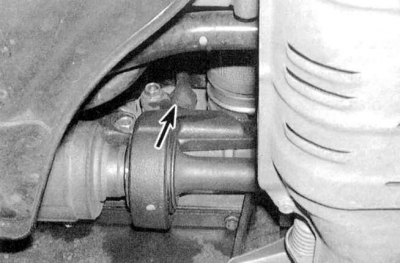
1a. Locate the Oil Pressure Switch Assembly (see accompanying illustrations). On Civic models, the oil pressure switch is located directly above the oil filter (the filter is removed).

1b. On Integra models, the oil pressure switch is located in the oil filter assembly. 2. Remove the sensor-switch and replace it with an adapter for connecting a mechanical pressure gauge. To seal the threaded connection of the nozzle, use Teflon sealing tape or FUM tape.
3. Connect an accurate tachometer to the engine according to the manufacturers instructions.
4. Check the oil pressure while running at the specified Specifications rpm and the engine warmed up to normal operating temperature. Compare measurement results with standard data. If the oil pressure is too low, the degree of wear of the bearings and the oil pump should be assessed.
